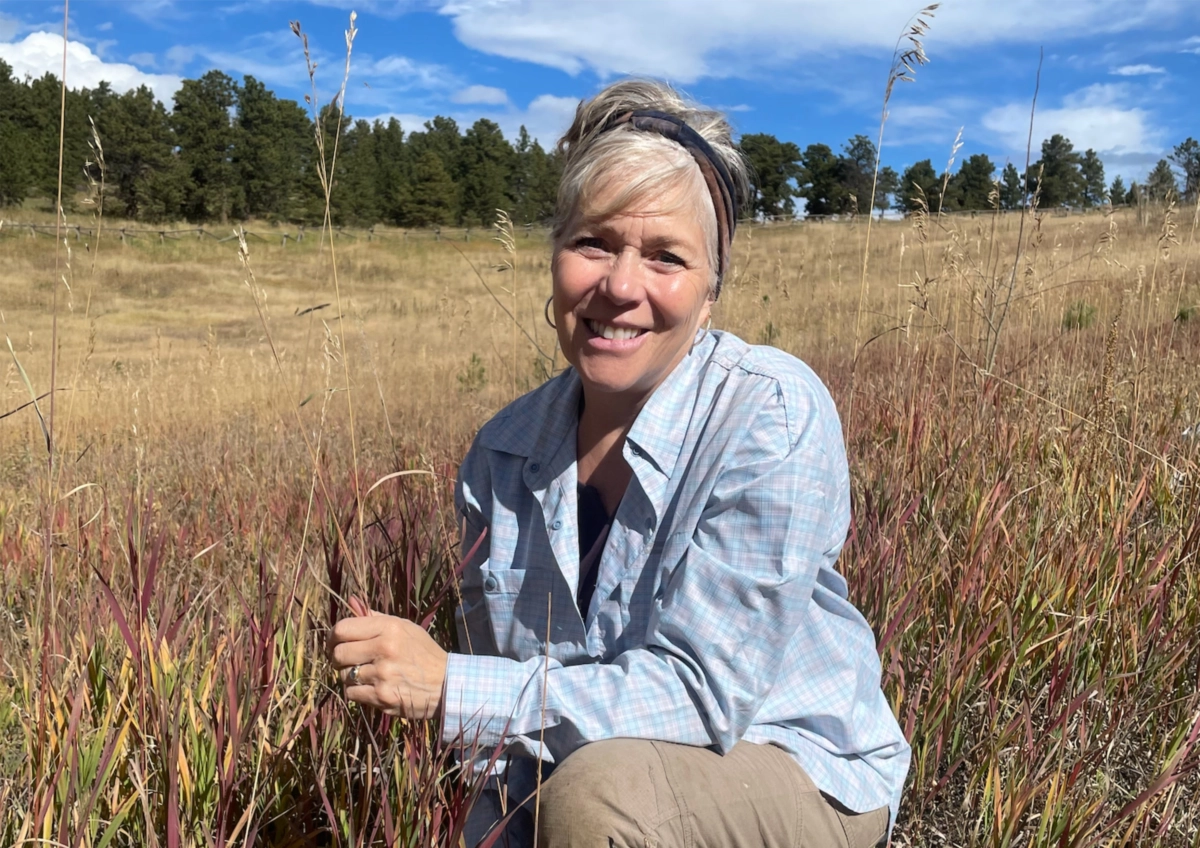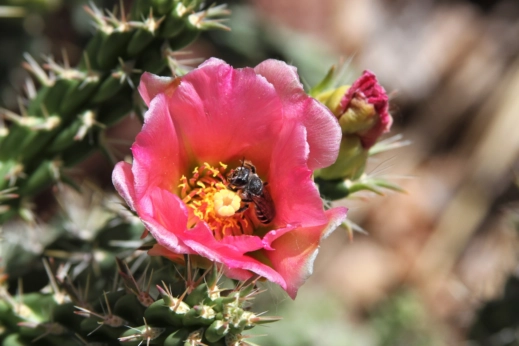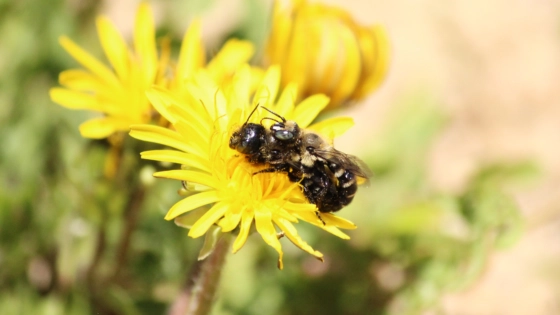Andrea Montoya created an advocacy program of community members to plant native species across the city, re-wilding urban spaces into critical habitat.

In Boulder, Colorado, the grasses and prairie flowers of the Great Plains wave as they stretch up, eventually giving way to the Ponderosa pines that dot the Rocky Mountains. This ecosystem overlap is why, of the 946 species of bees native to Colorado, 562 of them can be found in Boulder County. Andrea Montoya is on a mission to learn from this natural ecosystem overlap and rewild urban spaces with native plants. In doing so, she hopes to ensure this unique population of pollinators can thrive for generations to come.
Three years ago, Montoya started the Pollinator Advocates program. In that short time, she’s trained nearly 50 community members in-depth about the importance of native habitat for pollinators and reintroduced thousands of native plants to yards and parks around Boulder.
“I am positive that [this led to] an empiric increase in the numbers of insects and hummingbirds in our neighborhoods,” she says. “We are currently working with entomologists on setting up surveys across the city.”
Montoya spent decades improving the well-being of people as a physician’s assistant, treating cancer and auto-immune diseases and supporting patient recovery with herbal remedies. But since retiring in 2015, she’s become dedicated to improving the well-being of “our Great Mother.”
She first stumbled across a native bee house at the library in 2018 on a walk with her grandson. This prompted a research deep dive, learning from local experts and taking courses at the University of Colorado, and spiraled into community activism.
“The more I read about these native bees and plants and ecosystems, the more I realized that the reason why pollinators were so in decline is because they lost habitat,” says Montoya. She looked around her own neighborhood—densely packed with houses and “dead sod.” An ecological graveyard.

Photography by Adrian Carper.
Native pollinators need the relationships they have with native plant species to survive, like how monarch caterpillars only eat milkweed. We love songbirds, but they need healthy insect populations to thrive. Montoya points out that a pair of chickadees need 6,000 to 9,000 caterpillars to raise a clutch of young before they leave the nest.
In 2019, Montoya started out by giving native plants (donated by Harlequin’s Gardens and Growing Gardens) to neighbors to encourage buy-in. She recruited volunteers to plant in “pocket parks,” small public spaces in densely populated neighborhoods, and would pass along what she’d learned about pollinators. Her Polish and Mexican Indigenous heritage helps her connect with people from diverse backgrounds, building a network of interested community members.
The city-sponsored free Pollinator Advocates (PA) program she launched in 2021 is now “bigger than I could have imagined,” she says. “Time and again, it really keeps me going that so many people are drawn to the work.” The PA program is application-based and open to adults within Boulder, with 20 people per cohort. Organizers try to choose applicants with a mix of backgrounds and experience, to ensure diversity within the group.
Participants commit to attending a weekly two-hour lecture from June through August with local experts—including professors, researchers and conservationists—who teach about native pollinators and plants, and they spend roughly 15 hours volunteering to plant and maintain pollinator habitat in the city. In the end, graduating PAs receive $150 worth of native plants for their own yards from Harlequin’s Gardens.
Montoya’s favorite moments are when she’s out with a group of new PAs or volunteers and a bee lands on a flower. In her experience, it’s like watching a baby being born. “You’re gonna think I’m exaggerating,” her face is lit up, joyful, “but everyone goes ‘Ah! Look! It’s a bee! It’s here! It’s working!’ So, there’s little tiny miracles that I never thought I’d get to witness happening over and over again.”
But not everything is miraculous. One of Monotoya’s biggest challenges is that people have major fears of insects. Even nature documentaries “show insects as being these weird, aggressive, pinchy, bitey monsters.” When going into communities to talk about pollinators, she starts with the less anxiety-inducing species: butterflies and hummingbirds. If the conversation is going well, she’ll pull up a picture of a native bee—from the millimeter-long Perdita minima to metallic green sweat bees or a lumbering bumble bee. Seeing these insects in less frightening ways can open people’s minds to the benefits and beauty of native pollinators.
Montoya sees her work as climate action and a way to bring life and biodiversity back to our environment. “It’s a chance to right a wrong as humans,” she explains.

Photography by Adrian Carper.
So, what can we all do to support native pollinators, especially farmers? Talk to your neighbors and advocate for pollinators, plus take these three actions.
First, stop using chemical pesticides. “You’ll kill the very organisms both in the soil and flying around that you need,” says Montoya. She says that commercial pesticides contain toxins harmful to humans as well. She encourages people to opt for natural pest management options, such as creating a healthy ecosystem or killing invasive pests such as Japanese beetles by knocking them into a bucket of soapy water. For Montoya, the best pest management technique is creating a native habitat, as there are more beneficial insects that can prey on and outcompete harmful ones.
Second, plant regionally native plants around your garden or farm, being sure to have blooms across as much of the season as possible. “Plants that need the native soil don’t really need all the nutrients in a food garden bed,” she says, so she recommends 100 feet to 300 feet between your veggie beds and native plants so they all thrive.
Third, leave some patches of bare soil—no mulch, no thick cover crop, no plastic—as the majority of native bee species nest in the ground.
Doors having only a single hive or so help the entire program ? Had 4 hives some years ago.
Had 4 hives on parents ranch years ago – interesting as to can I help and in what ways
This is such a beautiful program that Andrea has created! I love bees and without them we would all perish. They are literally life bringers. Bravo Andrea! You make the difference. Thank you!